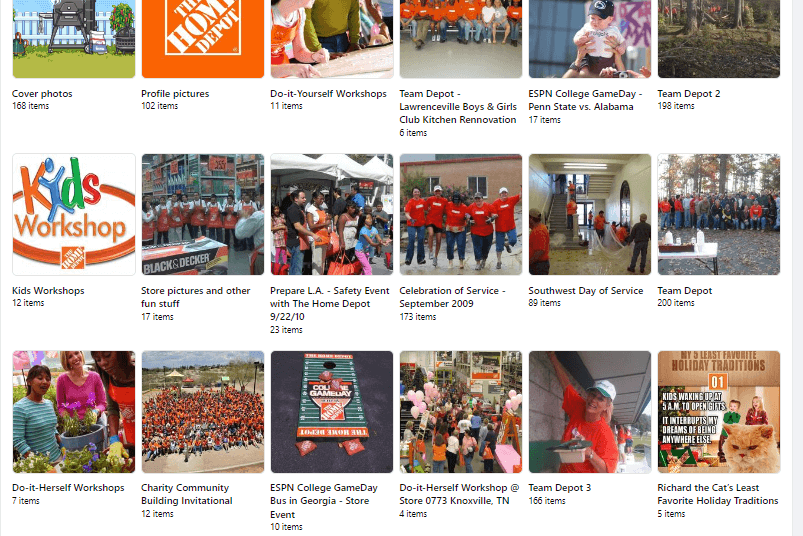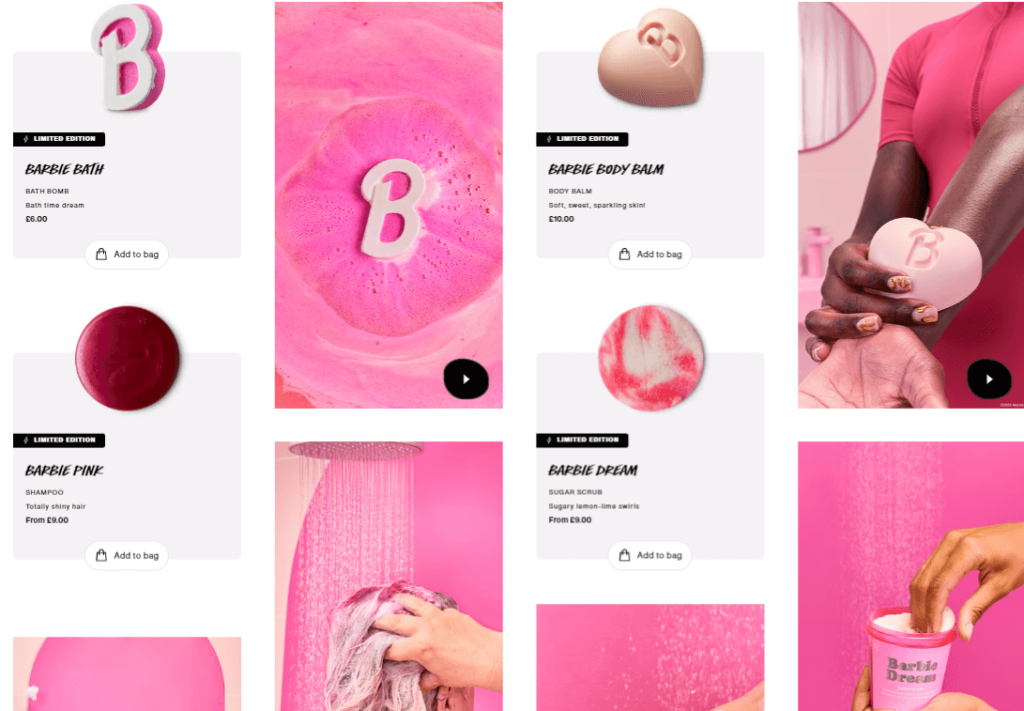
Maximizing Sales with eCommerce Advertising Strategies
As a growing eCommerce business or an established one, you need eCommerce advertising strategies that sell.
To devise such strategies, you simply need to answer two questions. Is it targeting the intended audience? (If you don’t know your audience yet, that’s step 1.) Does the strategy align with your current business goals?
If the answer to both questions is a resounding yes, you’re already on the right path! If the answer to any of them is no, fret not. This article enlists some of the best eCommerce advertising strategies implemented by eCommerce giants
Ready to take a deep dive into these ad strategies? Let’s get to it.
1.Implement Strategies to Save Abandoned Carts
Did you know the average cart abandonment rate across all industries is 69.57%?
So, when consumers land on your website, they go through the products, pick and add a few to the cart, and then bam, they leave! The reasons for a consumer failing to checkout are plenty. They were either simply browsing, were not interested in buying, or didn’t want to pay the extra shipping costs.
Losing out on potential consumers this way is disheartening for any eCommerce business. However, there are ways to prevent this from happening. To tackle this challenge, you can put into action the strategies mentioned below:
- Send cart reminders to your potential consumers
- Offer discounts on products separately or a hefty discount on making a purchase of x amount.
- Use delivery/shipping incentives.
But a lingering question remains: How can you effectively send cart reminders or distribute discount coupons to these potential customers?
The answer lies in a straightforward email template. Let’s look at how Amazon does so.
Amazon Sends Cart Recovery Email Template to Consumers
As the world’s largest retail giant, you can safely follow Amazon’s lead. It uses a simple cart recovery email template for its stores across the globe. Moreover, they send follow-up emails to consumers who have abandoned carts or emails related to what they’ve been looking at.

The image above gives a gentle reminder with a simple text, “You recently added items to your Shopping Cart. If you haven’t already purchased or removed them, simply visit your Shopping cart to complete your order.”
This approach works for a few reasons:
- The message is to the point.
- A URL hyperlink to the text “your shopping cart” makes it easier for consumers to visit their carts.
- The sentence is assertive and not a question; instead of asking the consumer whether they want to complete the order, the message gently pushes them into completing it.
Pro tip: Add discount coupons along with the email to increase the chances of turning hesitant buyers into buyers!
2.Leverage Facebook Ads for Effective Targeting
Social media ads fall under most eCommerce marketing strategies. And when we talk about social media marketing for eCommerce, Facebook pops into our minds. A multifaceted Facebook advertising strategy for eCommerce is critical to achieving success for your eCommerce brand.
But, do you know what makes Facebook ads for eCommerce business advertising strategies so popular?
It’s because you can leverage Facebook ads at any stage of your sales funnel. So we can say that Facebook ads for eCommerce business advertising strategies are perfect for brands willing to boost either engagement or conversions.
This adaptability is complemented by the approach followed by top brands on Facebook, who adhere to a “Keep It Simple, Silly” approach. Their ads solely focus on the product or service and are hardly meant to increase website traffic. Depending on your brand’s requirements, decide whether your focus is generating revenue or engaging users, as creating ads will differ for both.
Home Depot’s Multi-Faceted Facebook Ad Campaigns Do It Right
From targeting the audience based on demographics, behaviors, etc. to leveraging Facebook’s remarketing features to re-engage users, the brand does it all. It posts various ad formats, including image ads, short-form videos, and long-form guides.

As seen in the image, the brand posts content from DIY workshops to kids workshops and other charity community photos. While the page feed is filled with content, it runs Facebook campaigns targeting only its app.
3.Use Social Proof to Foster Trust
Recall the last time you acquired a service from a company, whether it was seeking assistance from online advertising agencies or making a purchase on an eCommerce website. In both cases, you must have gone through reviews.
Social proof offers consumers assurance when buying products from your brand. This assurance helps you build trust among the users, eventually increasing the chances of boosting sales. However, simply adding testimonials to your website isn’t the only way.
You can use any of the following ways to use social proof to increase sales:
- Showcase consumer testimonials on your website.
- Tweet about your happy consumers by tagging them.
- Show a real-time popup displaying the number of people viewing or purchasing your product.
- Leverage user-generated content on social media by asking your consumers to share their stories about your product/brand.
- Ask consumers to fill out Google reviews.
Video testimonials are becoming more popular, given the attention span. Plus, users today prefer video content over text.
Airbnb Publishes Videos Showcasing Hosts and Their Properties
Video testimonials cast a vote of confidence in your service’s value, eventually helping your sales skyrocket! Airbnb publishes their hosts’ stories by posting videos on their YouTube channel.
Video testimonials offer the opportunity to put a more nuanced perspective on the service in the online world. While text-based testimonials also talk about your consumers’ successes when using your service, the effect videos have is different.
By allowing consumers to narrate their experiences, video testimonials establish a relatable connection with other viewers. This is why video content holds a significant place in Airbnb’s marketing strategy.
4.Make the Most of Content Marketing
There’s no substitute for creating valuable and relevant content to attract new audiences while retaining existing ones. The statement stands true regardless of the industry domain your business falls in. So, when you Google advertising strategy eCommerce, you will find a gazillion websites emphasizing content marketing.
If you have an established eCommerce brand and a solid budget, leverage AI. Use big data analytics tools to study consumer behavior and their buying habits. Use these insights to know which products make your consumers tick and create content surrounding them. After all, 80% of consumers are more likely to purchase from brands that offer personalized experiences.
As an eCommerce business, create content tailored to your consumers’ needs. Knowing your consumers’ needs could be challenging if you’ve just stepped into the industry; in this case, your best bet is to experiment and analyze consumers’ reactions.
Lush Cosmetics Leverages Text and Video-Based Content
eCommerce websites, which are nothing but product pages, are a no-go. Lush Cosmetics knows how to provide valuable content to its consumers with subtle product plug-ins.
Skimming through their Articles Hub section, they try to educate the user rather than sell their product.

The core focus is to offer their users valuable content, making it apt for users looking to fill their mind-body content appetite. While on YouTube, the brand posts how it is made videos showcasing the entire process of making soap.
The colorful visuals with bubbly sound effects topped with storytelling do it for the consumers!
5.Use Gamification to Boost the Consumer Experience
It’s only human to want a reward in response to an action.
Gamification is a marketing technique involving game elements to encourage users to engage with the brand.
In the pursuit of innovative methods to enhance eCommerce sales, gamification emerges as a fitting choice, capturing the essence of engagement and enjoyment. While its status as the most revenue-generating advertising strategy is debatable, it undoubtedly stands as one of the most enjoyable eCommerce advertising approaches.
Strategies that make you feel rewarded are a sure-shot way to make your brand your consumers’ favorite brand. After all, one can’t beat the feeling of winning a badge for making X number of purchases or clearing steps to reach the final level as you get to the checkout page of a website.
Casper’s Quirky Riddle-Based Gamification Strategy Stands Out
In 2019, Casper, a mattress company, developed a retail gamification strategy to build brand awareness. They placed rebus riddle ads in the Toronto and New York City subways. These riddles covered the entire subway, consisting of pictures that spelled out a word related to the topic of a good night’s rest.

The campaign led many consumers to visit Casper’s website to find solutions to the results, resulting in increased organic traffic. This simple trick took people’s minds off their dull everyday commutes and into something fun that tickled them. Plus, the length of the riddles was short enough to complete on a subway ride.
Similarly, the brand has a mattress quiz on its website for consumers to better choose the right mattress.

Final Words
You should choose the ones that align with your overall business goals. For instance, boost content marketing if your goal is to enhance consumer engagement organically. Similarly, if you intend to target a specific target audience for a product, leverage the power of paid ads.
Sure, experiment with a few strategies to see the outcome, but also know when to stop, choose a different one, or tweak your approach to the existing one. If that sounds too overwhelming, you can always contact the best eCommerce agencies for a seamless journey!






















